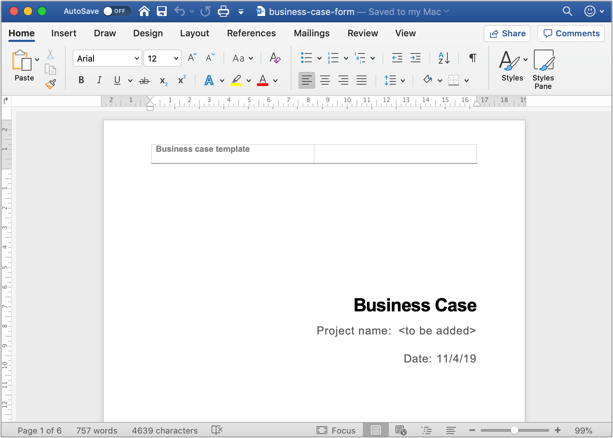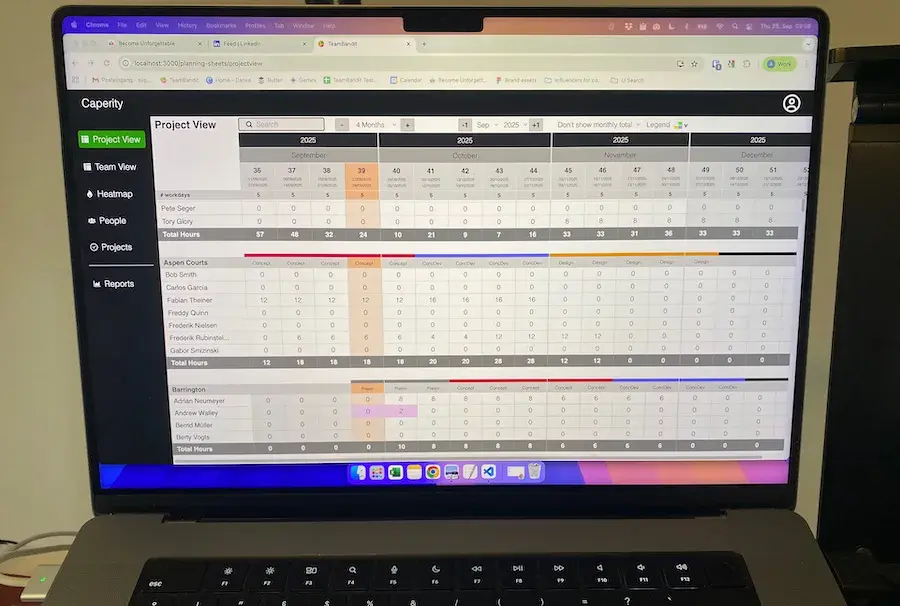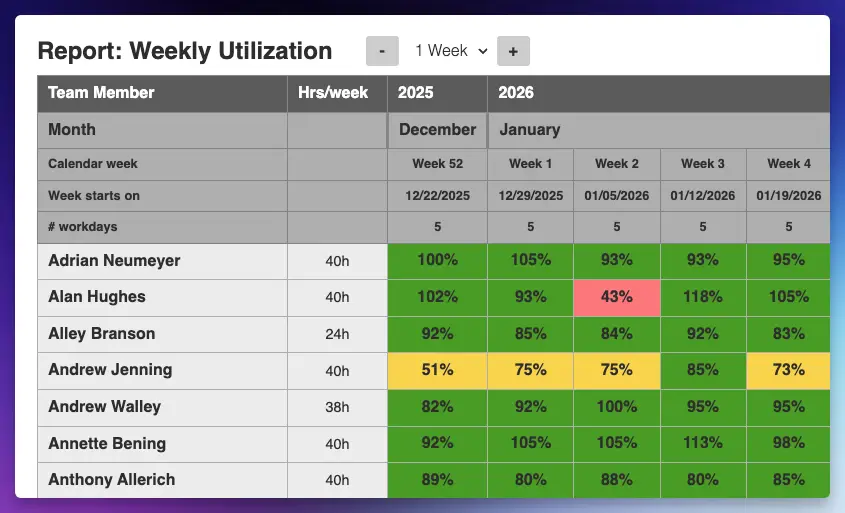Do you also watch Shark Tank? I love the show for two reasons.
Number one, you learn so much about business. Number two, it’s just fun to live through the moment from the perspective of the entrepreneurs.
The amazing successes. But also the embarrassing failures.

One thing I am particularly looking for:
Is there a strong business case?
Because that’s the key question.
The sharks want to make money. And only if an idea has a strong business case will they be able to earn back their investment and make a profit.
What actually is a business case? And how do you come up with one that is really compelling? This is what you will learn in the following article.
What is a business case?
You can’t do all the things at the same time: a cruise in the Caribbean, a city tour through New York, a walk along the Great Wall of China. There is only so much money you can spend. And even if money is not the limiting factor, time is. That’s why we usually choose one major vacation every year. One that gives us the most excitement, joy or fun.
Just for the same reasons (limited resources), companies have to decide what project they gonna start. What product to launch. What geographical region to explore. They want to pursue projects that provide great business opportunities.
A business case is a framework that helps companies decide if a project is worth pursuing. It answers the question “should we do this?”, where the focus could be a product, a project or any other initiative, a market expansion and other things.
Example:
When Jeff Bezos (founder of Amazon) had the idea of launching the world’s first online bookstore (that became Amazon), he had a good idea of how many books he could sell, how much he earned per book and how the business could grow. It was a good idea to start Amazon, because selling books online was a strong business case. All the indicators showed there was lots of money to be made!
The number of people using the internet grew exponentially:

In a nutshell, a business case shows if an idea:
- is profitable (ie. a company can make money from it)
- has manageable risk
- is feasible
In a more practical meaning, a business case is a document that’s supposed to show that a project is beneficial for a company and provides monetary and other improvements (You’ll find my business case template below).
Are business cases just for businesses?
No. The concept of a business case is also useful outside of the business world. You can even use it for your own, personal decisions.
For example you could create a business case on:
- whether you should do an MBA. Will the potential higher income make up for the tuition cost?
- whether to build your own house vs. renting
- whether you should get PMP certified or not
Even for non-profits the business case framework can provide a solid foundation to decide whether to tackle a project or not.
The question then changes from “Can we make money from this?” to “Will we be able to achieve the desired result with the funding available?”.
When Bill Gates decided to fight Malaria, Tuberculosis and other diseases by funding research projects, it wasn’t just about giving money (of which was a lot available). Gates and his foundation were also able to turn the charity work into a positive story and to map out a plan that shows it’s actually possible to fight these diseases and to reduce mortality in poor countries. And that’s exactly what a good business case can do. It inspires people to think bigger and to be more ambitious with their goals.
Why would you create a business case?
A business case helps you get funding and approval for your project. Your organization’s management wants to know if the project you are proposing is actually worth the effort and money. This makes a business case a tool for persuasion, because you try to win over the decision makers and those in charge of funding.
The difference between business case and project plan
A business case is usually created way before an actual project is started and a detailed project plan is created. Remember that the purpose of a business case is to find out whether a project is worth pursuing at all. Only once a business case has been established, will an organization pursue the project and work out a step-by-step project plan.
How are the two connected? A business case should include a high level project plan. Some very basic information on the milestones of a project and the approximate timeline. This is all done using ballpark figures, and without having dived deep into the subject matter.
Putting together your business case
Are you ready? Now we’ll put together a real business case. And you will see what information goes where.
Our sample business case: A company introduces digital PDF invoices, eliminates paper invoices

Here’s the example we will be using:
- A manufacturing company is looking for ways to cut cost. One idea the company’s experts came up with is to eliminate paper invoices and only create PDF invoices.
- This means customers will be receiving PDF invoices following each purchase, and paper invoices will no longer be offered because of the higher cost.
- Your job is to establish a business case for digital invoices. The business case should analyse the potential savings and risks of going for digital invoicing.
The 5 Questions Every Business Case Must Answer
In this business case — and in business cases in general — you need to answer four main questions. If you answer those questions carefully, clearly and comprehensively and your numbers are solid, you have a strong business case.
- What is the problem you are solving? or What is the opportunity?
- How are you going to solve the problem or tackle the opportunity?
- What is the benefit?
- How do we get to the goal?
- What are the risks of going forward?
Question #1: What is the problem you are solving? or What is the opportunity?
A business case either addresses a problem or an opportunity that could be taken. For example, if your company’s sales are going down year after year, this is a problem that could be addressed in a business case.
An opportunity worth looking at could be a new technology. For example, an apparel company like Zara could explore the benefits of virtual reality to provide their customers a better experience buying clothes — and to sell more products. The question thus would become: “Can virtual reality drive sales and profitability for Zara?”.
Let me give you the most common problems and opportunities businesses face.
Business issues for a business case:
- declining sales
- declining profitability
- declining market share
- increased competition
- out-dated product portfolio
Opportunities:
- new product ideas
- new technology
- a new geographical region to sell to
- problems at the competitor
Question #2: How are you going to solve the problem? How are you going to harvest the opportunity?
Once you have established the problem, you need to explain how you intend to solve it. Or in case of an opportunity, how you go about reaping it.
This requires a good understanding of the subject matter, and this high level of expertise needs to come across in your business case.
Because no matter how challenging the problem or how promising the opportunity: if you can’t convey to the reader that you absolutely understand how to go about it, your whole business case is worthless because nobody will trust you.
Question #3: What’s the benefit? And how can you prove it through numbers?
This is the key question your business case must answer. And it’s the section that your CEO or management will be most curious to read.
Explain the benefits in both quantitative and qualitative terms, although your focus should be on the quantitative side. Quantitative means the benefits can be measured in numbers. Qualitative benefits are more subjective and less easy to agree upon.
Sub-questions to be addressed:
- What’s the measurable benefit?
- How much cost can be saved?
- How much extra sales can be made?
- Improvement in productivity?
Question #4: How do we get to the goal?
This is all about implementation and execution. You need to outline the steps that must be taken to get from the here and now to a fully implemented business case.
Your plan doesn’t have to be too detailed, but it should provide a rough estimation for the required time, effort and cost. What do I mean by ‘rough’?
For example, it’s sufficient to say it takes 12-18 months and $400k – $500k to implement the new idea. The thing is, you can’t be more accurate because you haven’t fully planned out the project yet.
Question #5: What risks are involved? What concerns have to be addressed?
You’ve probably heard the saying ‘There’s no free lunch’. What it means is that even the best-sounding idea or plan comes with certain costs. Cost in the form of risks or downside.
Your business case has to address those risks.
Let’s say for example your company is selling mattresses, and you’re making the case that extending the money-back guarantee from 30 days to 1 year will boost sales. How? Because people will be less concerned about buying a mattress they don’t like because it can be returned even months after the purchase.
A major risk could be customers exploiting your return policy. If this happens, your company will face large numbers in returns and reimbursements. This is a valid concern, right?
One way to address this specific risk in your business case would be to give examples of competitors or other companies that have successfully implemented a customer-friendly money back guarantee. Their numbers might show that returns have only increased 3% while sales have increased 15% due to the new policy. So this would be a success and there’s no reason to be concerned about this risk.
Whatever approach you take to handle risks and concerns in your business case, always make sure you are upfront about all concerns and only write down what you actually believe yourself to be true.
Use Numbers To Make Your Business Case More Persuasive
Now let’s go back to our Shark Tank story. As I told you before, the best entrepreneurs and those winning investment are the ones who can come up with numbers. With sound numbers that indicate how much they make 1, 2 or 3 years from now.
The reason why these entrepreneurs are successful is because they use numbers. And numbers are the most persuasive tool when you’re looking for funding.
Use numbers to show the potential
- cost savings
- increase in sales
- rise in productivity
- reduction in issues, customer complaints, returns etc.
- number of lives saved
The numbers you use depend on your industry. There are probably standard KPIs (key performance indicators) that are already being used in your organization, so you can just pick them and everybody will understand what you’re talking about.
To make your numbers easier to understand, draw them up in nice charts.
Want to make your business case even stronger? Make people think past the sale
Do you want to create a business case that people talk about on the hallway? An idea so powerful and compelling that not starting it becomes almost unthinkable?
Then you have to make the reader think past the sale.
What this means is you have to make the reader SEE and FEEL what life will be like if your idea would actually be turned into reality. Then it becomes an image in their mind and they get to love your project proposal.
Take this analogy from the world of real estate: Suppose you’re selling a beautiful house on a large property. Then you are not just selling walls, rooms and square feet. You are selling a dream of an amazing life:
Imagine the terrace where you are hosting BBQ parties with your friends.
Imagine the meadow where your kids can play with their horses.
Imagine what your friends will say who come to visit you.
These are all things the owner could do if he decided to buy your house. As you can see, these are all indirect benefits for the owner.
If you want to make people think past the sale, you have to understand what other (indirect) benefits a company will have from going with your idea.
Indirect benefits could be:
- fame
- press coverage (favourable, of course)
- customers become raving fans
- more respect from competitors (don’t we want to crush our competitors?)
- more fun at work (everybody likes that)
- access to greater talent
- a stronger financial position (no need to worry anymore!)
- more free time (to do other things like playing golf, explore new side projects)
Time for you to think about more benefits. If you have more ideas, please post them in the comments!
The business case template
Here is an actual business case template you can use for your project. I will walk you through each section.

Chapters:
- Executive Summary
- Definitions
- Objectives
- Assumptions
- Financial benefits
- Non-financial benefits
- Project plan (high level)
- Resources and investment plan
- Risk assessment
- Stakeholder analysis
Download the business case template
Chapter 1: Executive Summary
This is the first section in your business case document, and it’s the one everybody will read.
Write a summary of your four key questions and the corresponding answers: What problem / opportunity are you tackling? What positive impact will your proposal make? What’s your plan to implement the ideal? And what risks and concerns have you considered and how do you respond to these?
Because you want to capture the reader immediately, you should make the first phrase really attention grabbing. You could write something like: “Every single day, Global Corp. is sending out 3’000 invoices, amounting to a total cost of $ 3’750.” Boom. Isn’t that powerful?
Every person who’s going to read this will immediately think: Damn, we’ve got to do something about this. That’s a lot of money!
Once you’ve hooked the reader with a great first line he’s going to read further. And that’s what you want!
Chapter 2: Definitions
Any terms or abbreviations that the reader might not be familiar with, define them here.
The last thing you want is to alienate the reader with terminology he or she hasn’t heard before. This matters even more when your business case is read by people from other business functions.
Chapter 3: Objectives
Use this section to elaborate on the goal of the business case. What objectives is the case supposed to solve?
Taking our sample business case for digital invoicing as an example, the objective is to reduce operational cost and free up money for the company to use for other purposes.
Chapter 4: Assumptions
You also want to list any assumptions your business case is based upon.
With clearly stated assumptions, everyone will be on the same page and there will be fewer misunderstandings.
Assumptions could be for example:
- Resourcing assumptions, e.g. you could assume that certain tasks can be handled with internal resources to save cost.
- Any restrictions of your business case. For example if the proposed concept only applies to a sub-group of customers or a part of the company.
- Scheduling assumptions: Certain restrictions in the project schedule
Chapter 5: Financial benefits and cost
What are the expected financial benefits of the business case? And what are the cost for implementing your proposal? Put all this information into the section. Make sure to clarify how you came up with the numbers.
This section should also contain charts and diagrams to visualize your figures.
Financial benefits can be:
- cost saved
- increased revenue
- increased profit
- increased capital efficiency
Costs can be broken down into:
- operational expenditures
- capital expenditures
Example: For our digital invoicing example, the financial benefits are in the form of saved costs. The company issues 3’000 invoices per day which have to be printed, put in an envelope and stamped. We estimate the cost per paper invoice at $0.90. The total invoicing cost per day is therefore 3’000 invoices x $0.90 = $2’700. This is how much we the company can save every day!
What costs will the company incur from switching to electronic invoicing?
They may have to pay an IT service provider to set up the technical process that automatically generates the invoices. These are technical implementation cost and consulting fees.
The company also may have to buy new hardware in the form of servers and some extra software licenses. Both hardware and software are capital expenditures which the company can write off over several years.
Chapter 6: Non-financial benefits
What are the other benefits your business case will provide?
For example:
- greater employee satisfaction
- stronger brand
- better company culture
Chapter 7: Project plan
Include a high-level project plan with the major milestones.
The project plan doesn’t have to be very detailed! Draw it up on a Powerpoint slide and not with a complex tool like MS Project. Paste the screenshot into your business case document.
Chapter 8: Resource and investment plan
A good business case also includes a resource estimation as well as an investment plan.
The resource plan shows the estimated effort for each of the involved teams. Again, these are only ballpark figures.
The investment plan illustrates the capital expenditures for any investments required.
For instance, if the company has to buy IT hardware for $30’000 those expenditures will be spread across the useful life of the hardware. Suppose the hardware will be used for 7 years, the monthly capital expenditures will be ($30’000 / (7 years x 12 months) = $357 per month.
The investment plan would look like this:
- June 2019: 357 (the date of purchase)
- July 2019: 357
- August 2019: 357
- and so on
Chapter 9: Risk assessment
Are there any risks involved in your idea?
If so, explain these risks and what you are going to do about them.
Risks could be:
- technical risks (e.g. software not working as expected)
- timing risks (project takes longer than expected)
- quality risks (e.g. product issues)
- business risks (e.g. dissatisfied customers)
If you’ve never done a risk assessment before, check out my article on how to do risk assessments properly!
Chapter 10: Stakeholder analysis
Who are the main stakeholders of the project?
For example: IT, accounting, sales, customer service
To get started with stakeholder analysis, read my insider tipps on stakeholder analysis now.
Author
-
Hi, I’m Adrian, a Senior Project Manager and the Creator of Tactical Project Manager, where I teach a pragmatic approach to project management. Led large-scale IT and business projects for over 10 years. My goal is to enable you to lead any project with confidence.
View all posts


